Development of Wireless Physical Layer Key Generation Technology and New Challenges
-
摘要: 物理层安全技术从信息论安全理论出发,保障通信安全,是实现安全与通信一体化的关键手段,逐渐成为国内外研究热点。该文围绕无线通信物理层密钥生成技术研究,主要聚焦在物理层密钥生成技术的理论模型,机制机理和研究现状,重点对比分析了两种不同类型密钥生成算法,即源型密钥生成算法和信道型密钥生成算法的区别和联系,揭示了物理层密钥技术利用通信信道内在安全属性促进通信安全的实质。特别地,该文给出了一种可行的物理层密钥生成5G工程实现框架。最后,该文展望了物理层密钥生成技术未来可能的研究方向。Abstract: Physical layer security technology secures wireless communications based on information security theory, which is the key means to realize the integration of security and communication, and has become gradually a research hotspot at home and abroad. The research of key generation technology in the physical layer of wireless communication is studied, mainly focusing on the theoretical model, mechanism and research status of key generation technologies. Through the comparison and analysis of the two different types of key generation algorithms, that is, the source key generation algorithm and the channel key generation algorithm, the essence of physical layer key technologies using communication channel’s inherent security attributes to promote communication security is revealed. In particular, a feasible physical layer key generation 5G engineering implementation framework is presented. Finally, the possible future research directions of physical layer key generation technologies is prospected.
-
表 1 源型密钥生成的相关实验总结
表 2 源型密钥生成步骤
步骤 功能 方法 目标 共享随机源获取 为密钥生成提供密钥源 互易信道
接收信号一致
安全
高效量化 将共享随机源量化为序列 等概量化
均匀量化
双门限量化
矢量量化量化比特数量多
量化误比特率小
量化序列随机性好信息协商 删除或纠正错误比特 Cascade方法
纠错编码方法纠错能力强
协商效率高
信息泄露少隐私放大 保证密钥安全性和随机性 私密信息抽取器
通用Hash函数破解概率低于密钥强度
通过NIST测试 -
史光坤. LTE/SAE系统密钥管理方案的研究与改进[D]. [博士论文], 吉林大学, 2017.SHI Guangkun. The research and improvement of the key management schemes in LTE/SAE system[D]. [Ph. D. dissertation], Jilin University, 2017. 雷新雨. 新型公开密钥交换算法的理论与应用研究[D]. [博士论文], 重庆大学, 2015.LEI Xinyu. Research on theory and application of new-type public key exchange algorithms[D]. [Ph. D. dissertation], Chongqing University, 2015. GOKEY M. NSA GCHQ SIM card hack Snowden leak news[EB/OL]. https://www.digitaltrends.com/mobile/nsa-gchq-sim-card-hack-snowden-leak-news/, 2015. 5G White Paper. 5G: Rethink mobile communications for 2020+[Z]. Future Forum 5G SIG, 2014. SHANNON C E. Communication theory of secrecy systems[J]. Bell System Technical Journal, 1949, 28(4): 656–715. doi: 10.1002/j.1538-7305.1949.tb00928.x WYNER A D. The wire-tap channel[J]. Bell System Technical Journal, 1975, 54(8): 1355–1387. doi: 10.1002/j.1538-7305.1975.tb02040.x ZHANG Junqing, DUONG T Q, MARSHALL A, et al. Key generation from wireless channels: A review[J]. IEEE Access, 2016, 4: 614–626. doi: 10.1109/ACCESS.2016.2521718 ZHANG Junqing, WOODS R, DUONG T Q, et al. Experimental study on key generation for physical layer security in wireless communications[J]. IEEE Access, 2016, 4: 4464–4477. doi: 10.1109/ACCESS.2016.2604618 MAURER U M. Secret key agreement by public discussion from common information[J]. IEEE Transactions on Information Theory, 1993, 39(3): 733–742. doi: 10.1109/18.256484 AHLSWEDE R and CSISZAR I. Common randomness in information theory and cryptography. I. Secret sharing[J]. IEEE Transactions on Information Theory, 1993, 39(4): 1121–1132. doi: 10.1109/18.243431 HERSHEY J E, HASSAN A A, and YARLAGADDA R. Unconventional cryptographic keying variable management[J]. IEEE Transactions on Communications, 1995, 43(1): 3–6. doi: 10.1109/26.385951 MARINO F, PAOLINI E, and CHIANI M. Secret key extraction from a UWB channel: Analysis in a real environment[C]. 2014 IEEE International Conference on Ultra-WideBand (ICUWB), Paris, France, 2014: 80–85. doi: 10.1109/ICUWB.2014.6958955. HUANG Jingjing and JIANG Ting. Dynamic secret key generation exploiting ultra-wideband wireless channel characteristics[C]. 2015 IEEE Wireless Communications and Networking Conference (WCNC), New Orleans, USA, 2015: 1701–1706. doi: 10.1109/WCNC.2015.7127724. LIU Hongbo, WANG Yang, YANG Jie, et al. Fast and practical secret key extraction by exploiting channel response[C]. IEEE International Conference on Computer Communications (INFOCOM), Turin, Italy, 2013: 3048–3056. doi: 10.1109/INFCOM.2013.6567117. ZHANG Junqing, MARSHALL A, WOODS R, et al. Efficient key generation by exploiting randomness from channel responses of individual OFDM subcarriers[J]. IEEE Transactions on Communications, 2016, 64(6): 2578–2588. doi: 10.1109/TCOMM.2016.2552165 MATHUR S, TRAPPE W, MANDAYAM N, et al. Radio-telepathy: Extracting a secret key from an unauthenticated wireless channel[C]. The 14th ACM International Conference on Mobile Computing and Networking, San Francisco, USA, 2008: 128–139. doi: 10.1145/1409944.1409960. ZENG Kai, WU D, CHAN An, et al. Exploiting multiple-antenna diversity for shared secret key generation in wireless networks[C]. 2010 Proceedings IEEE INFOCOM, San Diego, USA, 2010: 1–9. doi: 10.1109/INFCOM.2010.5462004. WEI Yunchuan, ZENG Kai, and MOHAPATRA P. Adaptive wireless channel probing for shared key generation based on PID controller[J]. IEEE Transactions on Mobile Computing, 2013, 12(9): 1842–1852. doi: 10.1109/TMC.2012.144 HU Xiaoyan, JIN Liang, HUANG Kaizhi, et al. Physical layer secret key generation scheme based on signal propagation characteristics[J]. Acta Electronica Sinica, 2019, 47(2): 483–488. doi: 10.3969/j.issn.0372-2112.2019.02.032 PREMNATH S N, GOWDA P L, KASERA S K, et al. Secret key extraction using bluetooth wireless signal strength measurements[C]. The 11th Annual IEEE International Conference on Sensing, Communication, and Networking (SECON), Singapore, 2014: 293–301. doi: 10.1109/SAHCN.2014.6990365. CHEN Kan, NATARAJAN B B, and SHATTIL S. Secret key generation rate with power allocation in relay-based LTE-A networks[J]. IEEE Transactions on Information Forensics and Security, 2015, 10(11): 2424–2434. doi: 10.1109/TIFS.2015.2462756 HALPERIN D, HU Wenjun, SHETH A, et al. Tool release: Gathering 802.11n traces with channel state information[J]. ACM SIGCOMM Computer Communication Review, 2011, 41(1): 53. doi: 10.1145/1925861.1925870 NI. USRP E320 (ZYNQ-7045, 2X2, 70 MHZ-6 GHZ, Board Only)–Ettus Research[EB/OL]. https://www.yottavolt.com/shop/usrp-e320-zynq-7045-2x2-70-mhz-6-ghz-board-only-ettus-research/, 2020. Wiki. Wireless open-access research platform[EB/OL]. http://warpproject.org/trac/wiki/HardwarePlatform/, 2013. Crossbow Technology. MICAz datasheet[EB/OL]. http://www.memsic.com/userfiles/files/Datasheets/WSN/micaz_datasheet-t.pdf, 2011. MEMSC. TelosB datasheet[EB/OL]. http://www.willow.co.uk/TelosB_Datasheet.pdf, 2011. WUNDER G, FRITSCHEK R, and REAZ K. RECiP: Wireless channel reciprocity restoration method for varying transmission power[C]. The 27th Annual International Symposium on Personal, Indoor, and Mobile Radio Communications (PIMRC), Valencia, Spain, 2016: 1–5. doi: 10.1109/PIMRC.2016.7794581. LOU Yangming, JIN Liang, ZHONG Zhou, et al. Secret key generation scheme based on MIMO received signal spaces[J]. Scientia Sinica Informationis, 2017, 47(3): 362–373. doi: 10.1360/N112016-00001 TAHA H and ALSUSA E. Secret key exchange using private random precoding in MIMO FDD and TDD systems[J]. IEEE Transactions on Vehicular Technology, 2017, 66(6): 4823–4833. doi: 10.1109/TVT.2016.2611565 TAHA H and ALSUSA E. Secret key exchange under physical layer security using MIMO private random precoding in FDD systems[C]. 2016 IEEE International Conference on Communications (ICC), Kuala Lumpur, Malaysia, 2016: 1–6. doi: 10.1109/ICC.2016.7511622. SHARIFIAN S, LIN Fuchun, and SAFAVI-NAINI R. Secret key agreement using a virtual wiretap channel[C]. IEEE Conference on Computer Communications (INFOCOM), Atlanta, USA, 2017: 1–9. doi: 10.1109/INFOCOM.2017.8057119. KHISTI A. Secret-key agreement over non-coherent block-fading channels with public discussion[J]. IEEE Transactions on Information Theory, 2016, 62(12): 7164–7178. doi: 10.1109/TIT.2016.2618861 ZHANG Shengjun, JIN Ling, LOU Yangming, et al. Secret key generation based on two-way randomness for TDD-SISO system[J]. China Communications, 2018, 15(7): 202–216. doi: 10.1109/CC.2018.8424614 WU Feilong, WANG Wenjie, WANG Huiming, et al. A unified mathematical model for spatial scrambling based secure wireless communication and its wiretap method[J]. Scientia Sinica Informationis, 2012, 42(4): 483–492. doi: 10.1360/112011-942 HARRISON W K, ALMEIDA J, BLOCH M R, et al. Coding for secrecy: An overview of error-control coding techniques for physical-layer security[J]. IEEE Signal Processing Magazine, 2013, 30(5): 41–50. doi: 10.1109/MSP.2013.2265141 NEGI R and GOEL S. Secret communication using artificial noise[C]. VTC-2005-Fall. The 62nd IEEE Vehicular Technology Conference, 2005, Dallas, USA, 2005: 1906–1910. doi: 10.1109/VETECF.2005.1558439. GOEL S and NEGI R. Guaranteeing secrecy using artificial noise[J]. IEEE Transactions on Wireless Communications, 2008, 7(6): 2180–2189. doi: 10.1109/TWC.2008.060848 LI Xiaohua, HWU J, and RATAZZI E P. Array redundancy and diversity for wireless transmissions with low probability of interception[C]. 2006 IEEE International Conference on Acoustics Speech and Signal Processing Proceedings, Toulouse, France, 2006: 211–221. doi: 10.1109/ICASSP.2006.1661021. LI Xiaohua, HWU J, and RATAZZI E. Using antenna array redundancy and channel diversity for secure wireless transmissions[J]. Journal of Communications, 2007, 2(3): 24–32. doi: 10.4304/jcm.2.3.24-32 FOUNTZOULAS Y, KOSTA A, and KARYSTINOS G N. Polar-code-based security on the BSC-modeled HARQ in fading[C]. The 23rd International Conference on Telecommunications (ICT), Thessaloniki, Greece, 2016: 1–5. doi: 10.1109/ICT.2016.7500449. ZHANG Yingxian, YANG Zhen, LIU Aijun, et al. Secure transmission over the wiretap channel using polar codes and artificial noise[J]. IET Communications, 2017, 11(3): 377–384. doi: 10.1049/iet-com.2016.0429 BAI Huiqing, JIN Liang, and YI Ming. Artificial noise aided polar codes for physical layer security[J]. China Communications, 2017, 14(12): 15–24. doi: 10.1109/cc.2017.8246334 TOPAL O A, KURT G K, and ÖZBEK B. Key error rates in physical layer key generation: Theoretical analysis and measurement-based verification[J]. IEEE Wireless Communications Letters, 2017, 6(6): 766–769. doi: 10.1109/LWC.2017.2740290 ZHANG Junqing, RAJENDRAN S, SUN Zhi, et al. Physical layer security for the internet of things: Authentication and key generation[J]. IEEE Wireless Communications, 2019, 26(5): 92–98. doi: 10.1109/MWC.2019.1800455 JIN Henglei, HUANG Kaizhi, XIAO Shuaifang, et al. A two-layer secure quantization algorithm for secret key generation with correlated eavesdropping channel[J]. IEEE Access, 2019, 7: 26480–26487. doi: 10.1109/access.2019.2893594 JIAO Long, WANG Ning, WANG Pu, et al. Physical layer key generation in 5G wireless networks[J]. IEEE Wireless Communications, 2019, 26(5): 48–54. doi: 10.1109/MWC.001.1900061 ZENG Kai. Physical layer key generation in wireless networks: Challenges and opportunities[J]. IEEE Communications Magazine, 2015, 53(6): 33–39. doi: 10.1109/MCOM.2015.7120014 JIN Liang, ZHANG Shengjun, LOU Yangming, et al. Secret key generation with cross multiplication of two-way random signals[J]. IEEE Access, 2019, 7: 113065–113080. doi: 10.1109/access.2019.2935206 LI Guyue, SUN Chen, ZHANG Junqing, et al. Physical layer key generation in 5G and beyond wireless communications: Challenges and opportunities[J]. Entropy, 2019, 21(5): 497. doi: 10.3390/e21050497 CHEN Xuxing, HE Zunwen, ZHANG Yan, et al. A key generation scheme for wireless communication based on channel characteristics[J]. Journal of Terahertz Science and Electronic Information Technology, 2017, 15(5): 834–840. doi: 10.11805/TKYDA201705.0834 QIN Dongrun and DING Zhi. Exploiting multi-antenna non-reciprocal channels for shared secret key generation[J]. IEEE Transactions on Information Forensics and Security, 2016, 11(12): 2693–2705. doi: 10.1109/TIFS.2016.2594143 LI Guyue, HU Aiqun, SUN Chen, et al. Constructing reciprocal channel coefficients for secret key generation in FDD systems[J]. IEEE Communications Letters, 2018, 22(12): 2487–2490. doi: 10.1109/LCOMM.2018.2875708 LI Shanshan, CHENG Mengfan, DENG Lei, et al. Secure key distribution strategy in OFDM-PON by utilizing the redundancy of training symbol and digital chaos technique[J]. IEEE Photonics Journal, 2018, 10(2): 7201108. doi: 10.1109/jphot.2018.2815001 ZHAO Jun. A survey of reconfigurable intelligent surfaces: Towards 6G wireless communication networks with massive MIMO 2.0[J]. arXiv, 2019, 1907.04789v1. DI RENZO M, DEBBAH M, PHAN-HUY D T, et al. Smart radio environments empowered by reconfigurable AI meta-surfaces: An idea whose time has come[J]. EURASIP Journal on Wireless Communications and Networking, 2019, 2019(1): 129. doi: 10.1186/s13638-019-1438-9 -





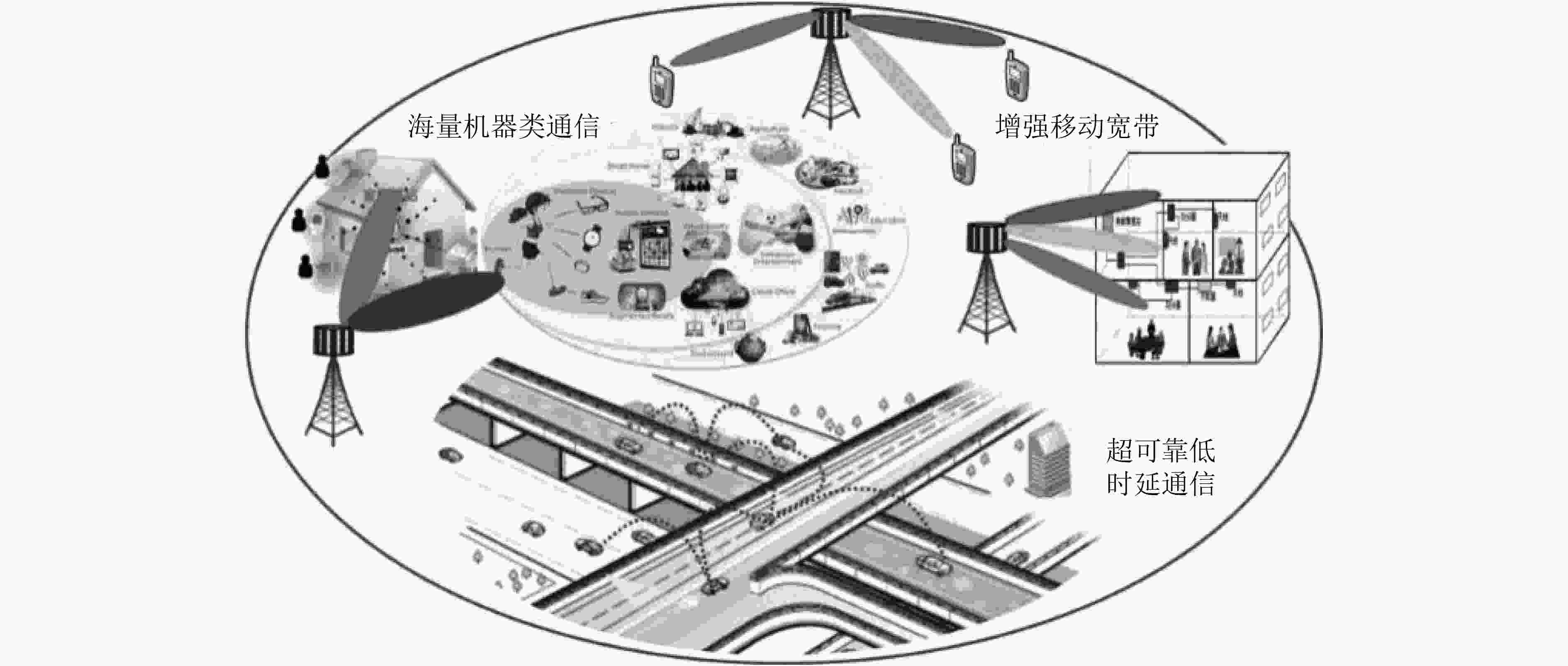
 下载:
下载:
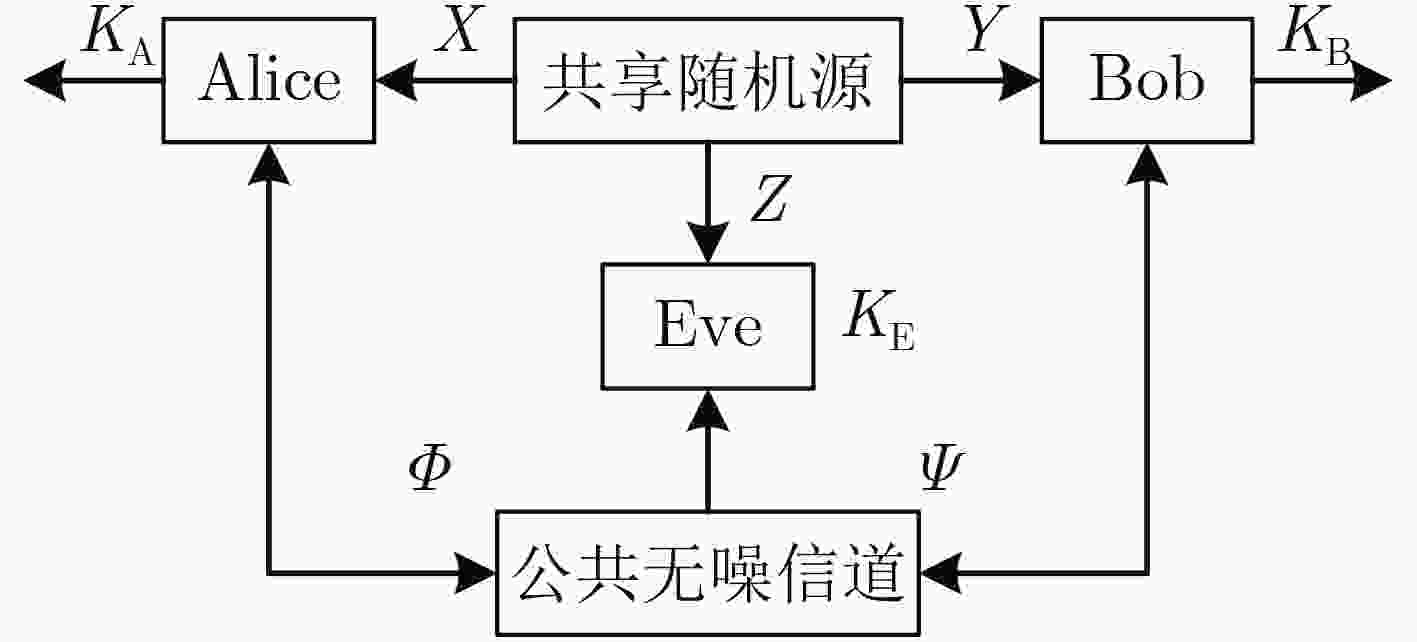
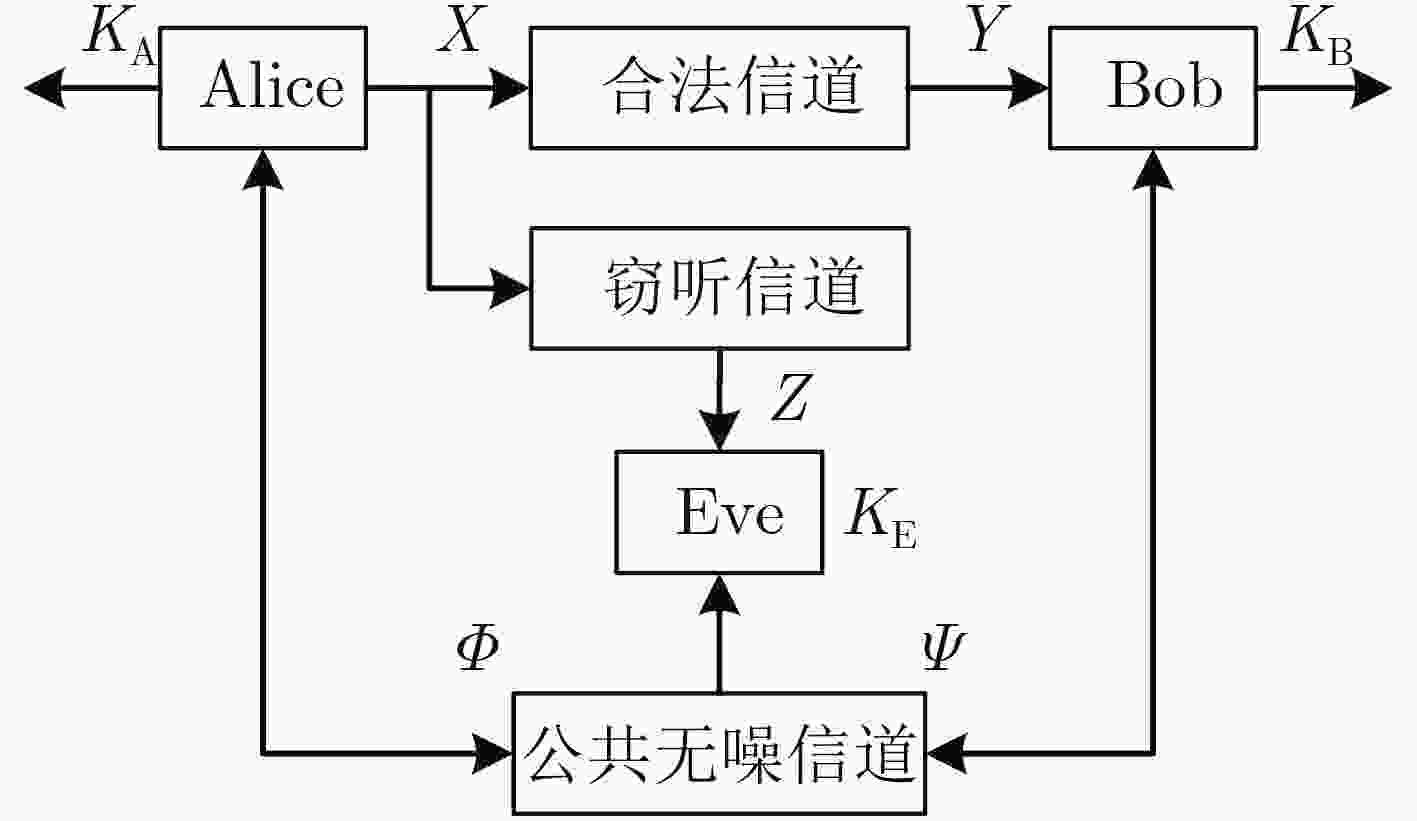
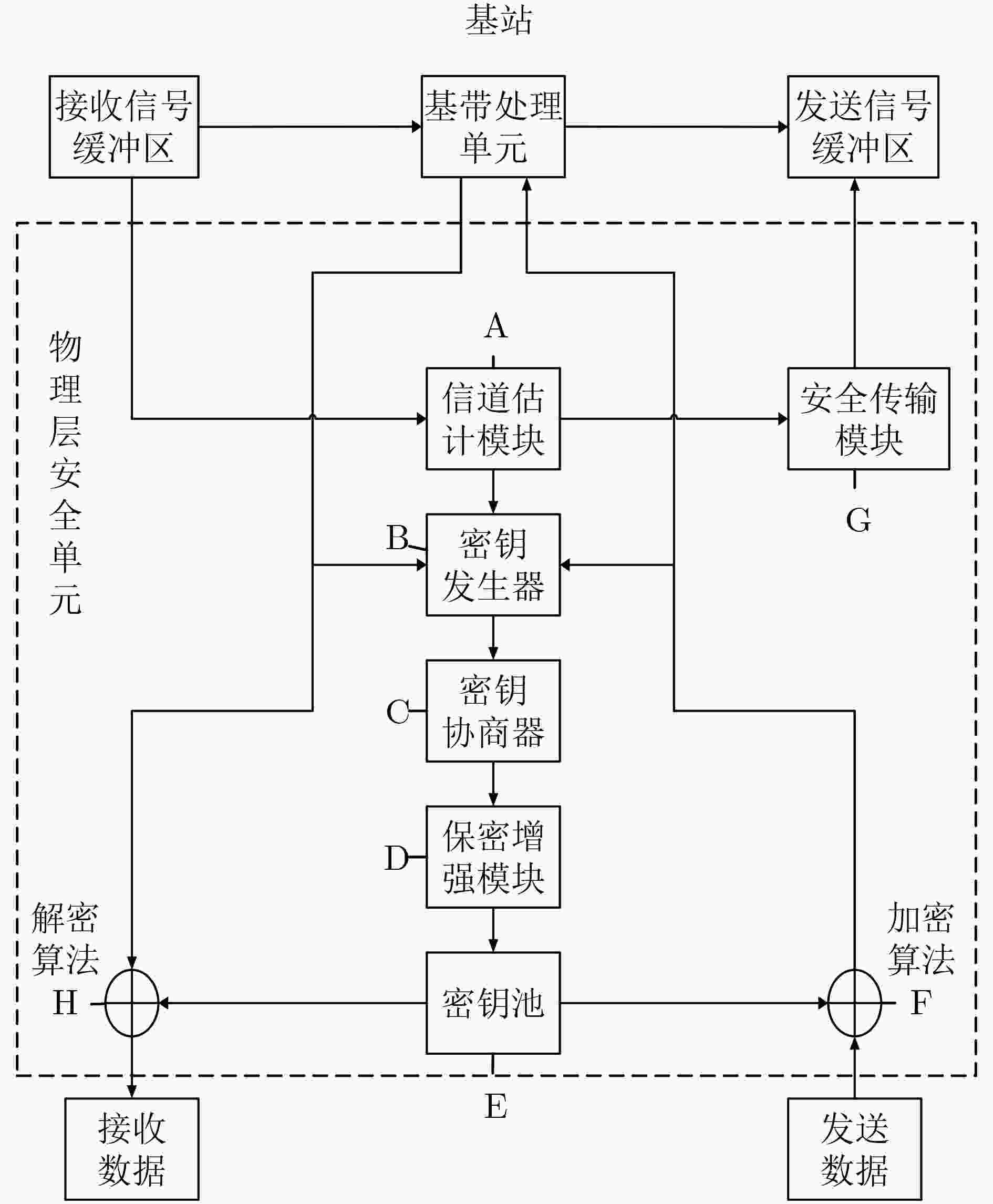
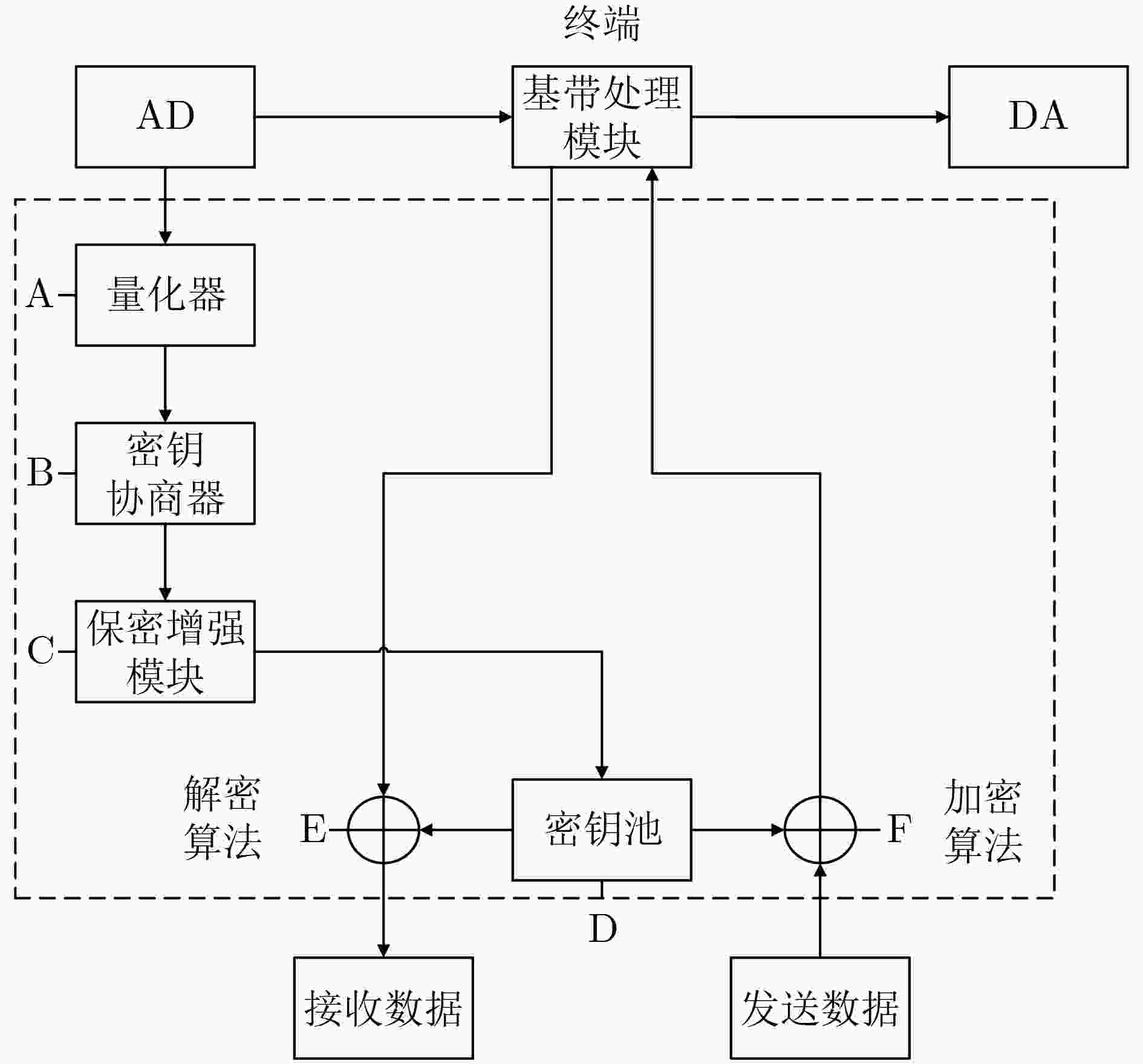


 下载:
下载:
